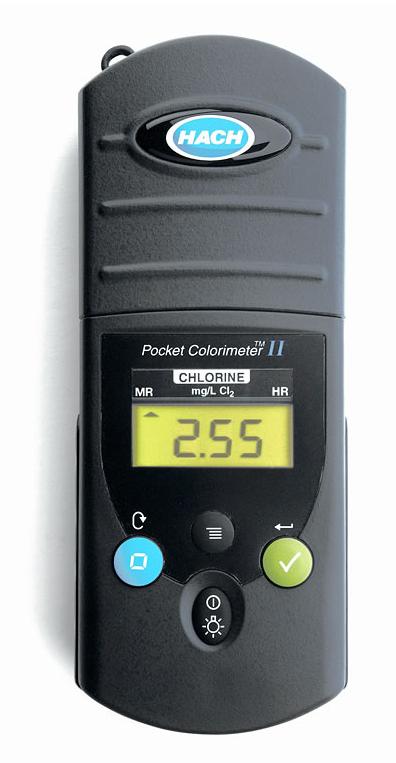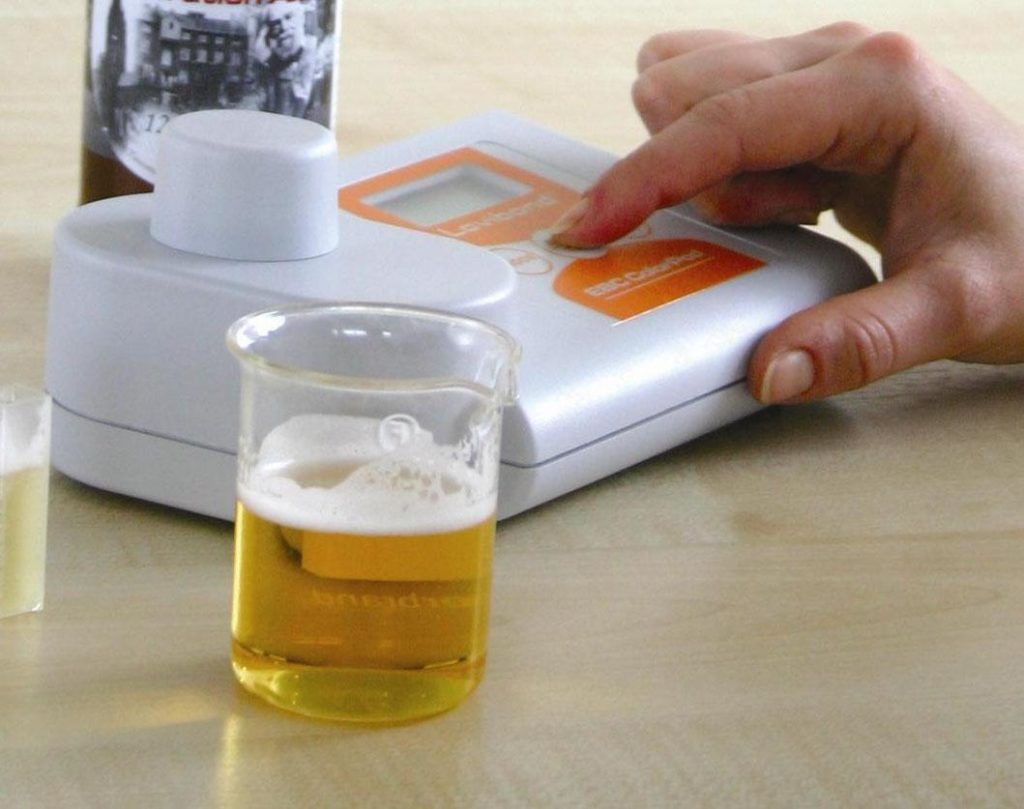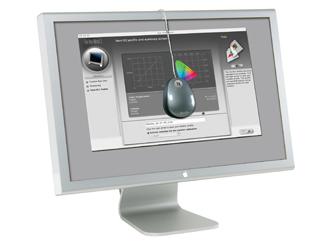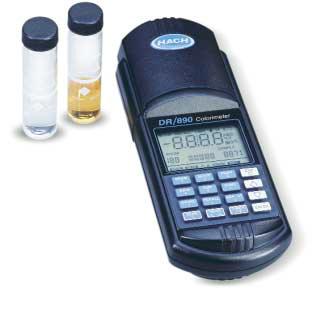Colorimeters measure the absorbance and transmittance of light through a fluid sample.

General Information
Colorimeters measure the concentration or intensity of the color that develops when a specific reagent is introduced to a solution. In order to do this, a light is shined into a sample, and the exiting light is compared to a reference standard, yielding the concentration of the sample. The results are presented in units of absorbance, A, or percent transmittance, %T.

Equipment Design
Colorimeters come in bench top, hand held, and pocket models. Bench top models are used for laboratory work, and hand held and pocket are used for field work.
Colorimeters work on the principle of Beer’s Law. A colorimeter measures the color of a solution by comparing it to a prerecorded standard of another solution. For example, a red dye in a food product might be measured in a colorimeter using a standard red solution as reference.



(Copyright Hach Company, Loveland, CO)
As shown in this schematic of a standard colorimeter, beams of light are fed into a sample and the light then flows through a set of lenses. The lenses send this colored light into a measuring device that compares the color to a prerecorded standard. Information is passed onto a microprocessor that calculates the resulting absorbance, A, or percent transmittance, %T, and sends the reading to the display.

Usage Examples
Any application that needs color and substance monitoring can be interfaced with a colorimeter. Colorimeters are used to measure and monitor the color in various foods and beverages, including sugar and vegetable products.

Colorimeters can also measure the color of another monitoring device. Shown here is a hand held colorimeter being used to detect the color spectrum used by the computer monitor. Certain colorimeters can also measure the colors used by printers, fax machines, and copy machines.

Advantages
- Results available in less than 1 second.
- Hand held and pocket sized colorimeters can make between 100 and 300 measurements on four AA batteries.
Disadvantages
- Colorimeters are fairly expensive.
- Reflecting light makes it difficult to take measurements on some surfaces.
Acknowledgements
- Hach Company, Loveland, CO
- LaMotte Company, Chestertown, MD
- The Tintometer Ltd, Lovibond House, Wiltshire, United Kingdom Lovibond® & Tintometer® are Registered Trade Marks of The Tintometer Limited. All translations and transliterations of Lovibond® & Tintometer® are asserted as Trade Marks of The Tintometer Ltd.
- X-Rite, Inc., Grand Rapids, MI
References
- Martinez-Anton, J.C., M. Anton, and A. Gonzalez-Cano. “A Simple Colorimeter.” The Physics Teacher Sept 1995: 372-374. Print.
- Stock, John T. “The Duboscq Colorimeter and Its Inventor.” Journal of Chemical Education 71 (1994): 967-969. Print.
Developers
- Jonathan West
- Kelsey Kaplan

